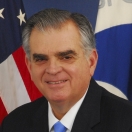
Cross posted from the Department of Transportation's Fast Lane blog. Read and comment on all 30 agency plans that will reduce burdens and save money.
Earlier this year, President Obama outlined a plan to create a simpler, smarter 21st-century regulatory system that protects the health and safety of the nation while also promoting economic growth, job creation, and innovation. With an Executive Order, he challenged agencies across the federal government to review rules already on the books and remove those that are out-of-date, unnecessary, excessively burdensome, or in conflict with other rules.
The Department of Transportation was happy to rise to that challenge, and today we are pleased to submit our Preliminary Plan for Retrospective Review and Analysis of Existing Rules.
Almost immediately after the President outlined his plan, through a notice in the Federal Register, DOT solicited comments from the public about rules we should review.
On March 14, we held a well-advertised public meeting at our headquarters in Washington, DC. To make participation easier and the meeting's proceedings more transparent, we streamed that meeting live on the internet and phone lines. We permitted speakers to submit comments either in person or by telephone.
We also used IdeaScale, a web-based, interactive discussion tool to allow the public to submit written feedback and to comment and vote on suggestions submitted by others. On the www.dot.gov website, we placed a special button icon designed to draw people's attention and bring them to the IdeaScale site.
Additional outreach attempts included a media alert, emails to interest groups, and a blog post I published here.
The point is, DOT beat the bushes to stimulate public participation in our regulatory review. And I hope you'll agree that effort paid off.
As a result of our review, we have identified 70 regulations for action. Of these, 19 would reduce burdens on small businesses, 11 would reduce information collection burdens, 12 would reduce the burdens on state, local, or tribal governments, and four would involve coordinating rules that overlap with other federal agencies.
One cost-saving example is the Federal Railroad Administration's positive train control rule. FRA has examined this rule and decided that revisions could be proposed that would significantly reduce industry burdens without adversely affecting rail safety. We expect savings on PTC installation alone to total between $225 million and $400 million. Over 20 years, installation and maintenance savings should total between $440 million and $1.04 billion.
This is a good start. And, when you add to that the 55 regulations that we are continuing to study, it's an even better start. But we can't stop there.
In addition to the special review we have just conducted, DOT already has procedures in place for regular review of existing rules. And, once the rulebooks are thinned of excessive regulation, we want to ensure that we don't slide into a culture of regulatory burden.
I think our nation can have a government that is vigorous enough to protect the lives and liberties of the American people while being agile enough to help America out-innovate and out-build its competition. That's how we win the future.


